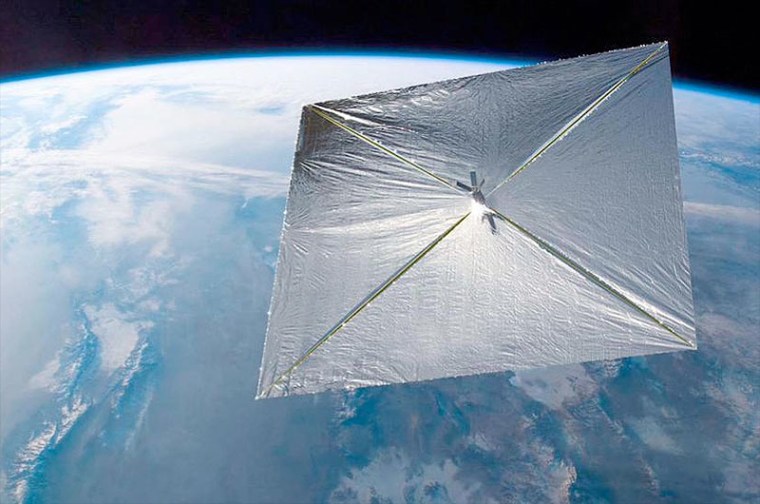One week after the Planetary Society's experimental LightSail spacecraft spread its solar sail, satellite watchers reported Sunday that it fell from orbit and broke apart in Earth's atmosphere.
Based on its orbital trajectory, the shoebox-sized spacecraft should have disintegrated around 1:23 p.m. ET Sunday, Ted Molczan said in an analysis posted to the SatObs discussion forum. There were no immediate eyewitness reports of LightSail's demise, but neither were there any sightings of the craft after that time.
Over the past few days, skywatchers have delighted to watch LightSail pass through the sky as a bright speck. One of those observers was Bill Nye the Science Guy, the Planetary Society's CEO. "It was just the faintest pinprick against the bright lights of the big city," Nye wrote in a blog posting.
The Planetary Society and its partners in the LightSail project always knew that this LightSail would fall victim to atmospheric drag within days of deploying its 344-square-foot (32-square-meter) sail of thin, reflective plastic. Testing the deployment procedure was the main point of the mission, which was launched May 20 as a secondary payload aboard an Atlas 5 rocket.
Mission managers struggled through a series of communication outages, but eventually managed to send up the commands for deployment on June 7. A couple of days later, pictures sent down from the spacecraft confirmed that the sail was nearly fully spread out. But not long after the pictures were sent, LightSail suffered a glitch that left its communication system capable of sending only a stream of gibberish.
Related: LightSail Team Declares Solar Sail Success
This test mission, known as LightSail-A, is to be followed next year by the launch of LightSail-B — a nearly identical sail-equipped nanosatellite that should fly high enough to demonstrate how sunlight can be used to propel and steer the spacecraft.
The technology already has been tested by such probes as Japan's Ikaros sailcraft and NASA's Nanosail-D satellite. The Planetary Society, a nonprofit advocacy group for space exploration, hopes LightSail-B will provide further evidence that solar sailing can serve as a low-cost method to send small spacecraft anywhere in the solar system.
"We are advancing space science and exploration," Nye wrote. "This mission is part of our mission. The best is yet ahead."
The estimated total cost for the LightSail project is $5.3 million, which is being covered by contributions — including a Kickstarter campaign now in progress.
The Planetary Society's partners in the LightSail project include Stellar Exploration Inc., which designed the spacecraft; Ecliptic Enterprises Corp., lead contractor for integration and testing; California Polytechnic State University at San Luis Obispo; and Georgia Tech. The project is managed by Doug Stetson of the Space Science and Exploration Consulting Group. Boreal Space and Half-Band Technologies are contractors to Ecliptic. For more about LightSail, check in with the Planetary Society.

